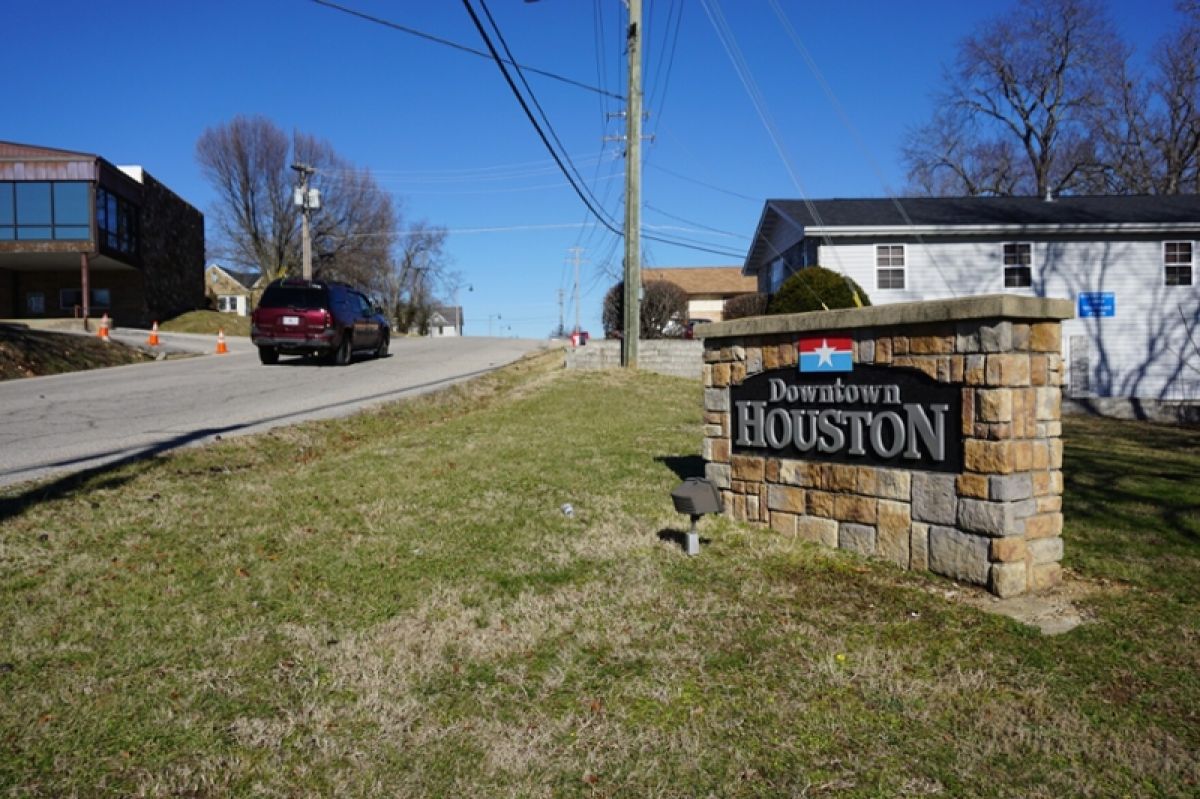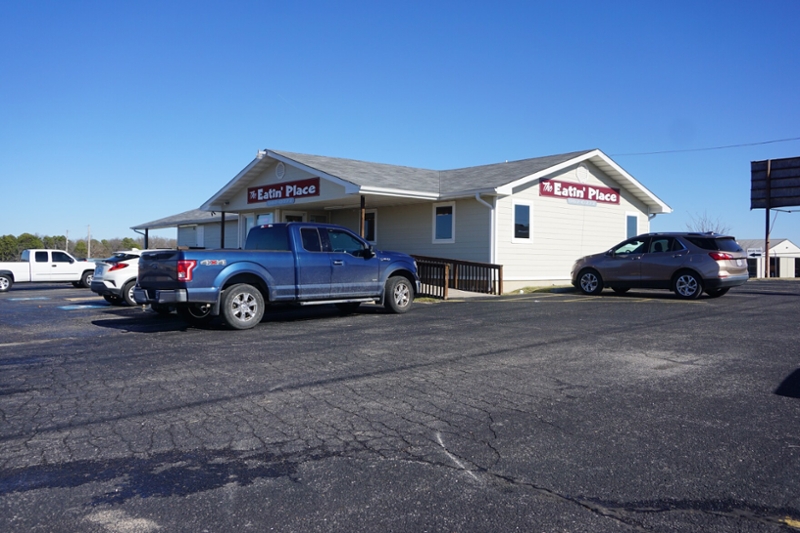
The small town of Houston, Missouri, is off the beaten path and has only 2,500 residents, but it still doesn't meet the definition of "rural" in some federal programs. (Jonathan Ahl / Harvest Public Media)
A town of 1,000 people feels like a rural place to someone from Chicago. To a person living in a town of 200 people, that population of 1,000 feels almost urban.
But what the government defines as rural determines tens of billions of dollars a year in spending aimed at propping up America's small or remote places.
Houston, Missouri, a town of 2,500 tucked into the hills of the Ozarks near the Arkansas border, takes pride as the hometown of famous clown Emmett Kelly. It holds an annual festival named in his memory.
The residents pride themselves on a small-town, rural lifestyle with easy access to wide-open, outdoor spaces.
But for some federal grants, Houston is not rural.
Consider when Scott Avery, the city’s administrator, went looking for money to bring stronger broadband to town. Federal money for that’s based on how remote, how rural a place is.
“I’m less than 100 air miles from Springfield,” Avery said. “So, I don’t qualify.”
The Springfield, Missouri, area has about 500,000 people. While it’s a one hour, 40-minute drive from Houston on two-lane roads, it’s only 90 miles as the crow flies.
Meanwhile, Rolla, Missouri, an hour north of Houston, is a town of 20,000 with an interstate highway running through it and a 240-bed hospital with a cancer center. It's home to Missouri University of Science and Technology and its 7,200 students and is a regional retail hub.
But because it’s more than 100 miles from Springfield and St. Louis — for the purposes of that broadband grant Houston couldn’t qualify for — Rolla is rural.
That’s just one seeming inconsistency in how federal tax dollars do, or don’t, get spent on rural problems. Those definitions can change from one federal agency to the next, or within agencies across various grant programs. The U.S. Department of Agriculture alone has more than a dozen different definitions for what’s “rural.”
The definitions take into account things like total population, population density, distance from a big city and even the percentage of people who travel into a metro area to work.
“When I look at the city of Rolla, I don’t think it meets the definition, any of the definitions of rural,” said Rolla Mayor Lou Magdits.
He pitches Rolla’s big city-like amenities, such as its airport, numerous manufacturing plants and high-tech sector.
And while his city didn’t apply for that particular broadband grant that Houston was shut out of, Magdits doesn’t shy away from grants intended to help small towns.
“If a grant comes down and it’s tied to rural,” he said, “I would probably self-justify it by saying, you know, Rolla and its periphery probably could meet that definition.”
While Rolla may be a lot bigger than Houston and still qualify as rural sometimes, Rolla competes with other communities that are much larger and still meet some of the definitions of rural.
“Sometimes our county is called rural and a smaller one isn’t, but sometimes we aren’t included and bigger counties are,” said Dale Martin with the Rolla Regional Economic Commission. “We’re not the king of rural areas, because some bigger cities are building out and they are wanting things that we have here, and they fit some of the definitions.”
Most economic development professionals are resigned to the rules and do the best they can within their inconsistencies.
“Folks are a little taken aback when you say anywhere around here is considered urban, and it’s not,” said Bonnie Prigge, executive director of the Meramec Regional Planning Commission that assists eight counties. “We would say everything in our area is rural, but we have to follow the rules.”
While the numerous definitions of rural frustrate some communities, there may be an upside. Prigge said a consistent definition of rural might make things easier, but it would likely exclude some communities all the time instead of just some of the time.
That’s cold comfort for Avery, the city administrator in southern Missouri. He lands grants targeted for rural America, but the city workers in Houston don’t have time to chase after opportunities only to find the rural town isn’t rural enough.

“When we’re looking at these communities and we’re comparing them, one size doesn’t fit all is true,” Avery said. “But at the same time, why can’t we make sure the systems are working everywhere?”
Instead of treating rural America as a place that can be defined by mileage and population rules, he said, it should be defined by the communities that have similar problems and need help.
That’s the approach Anne Morrison Smith of the Missouri Department of Economic Development takes. She is a project manager based in her home town of West Plains, Missouri, population 11,000, and works with nearby communities including Houston.
“We find the fingerprint of each community and how it works and conducts itself to be so unique to itself,” Smith said.
Former Agriculture Secretary Sonny Perdue said he wanted a standard definition of rural in the 2018 farm bill, but that didn’t make the final version. And that’s just one federal agency with numerous definitions of what is small and remote enough to be called rural.













